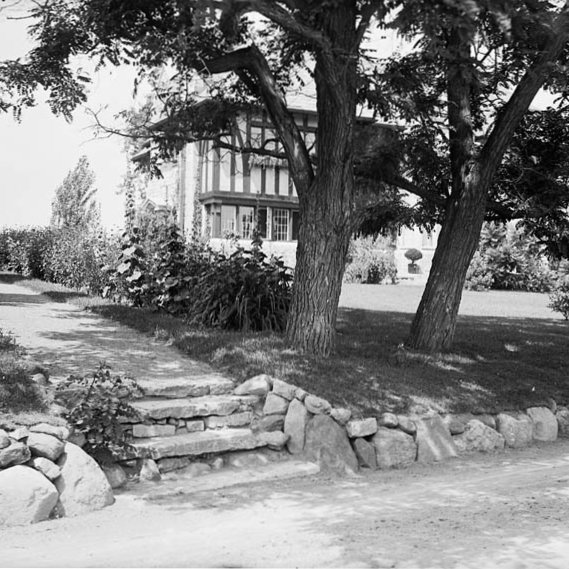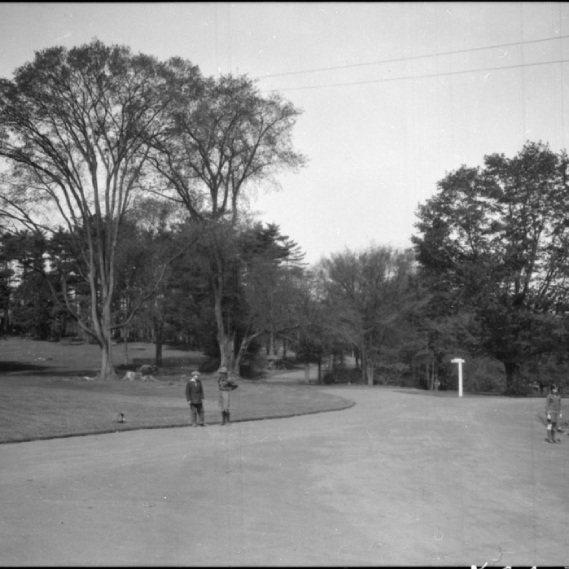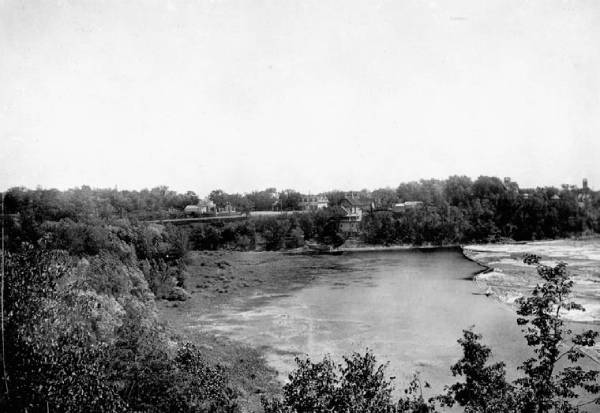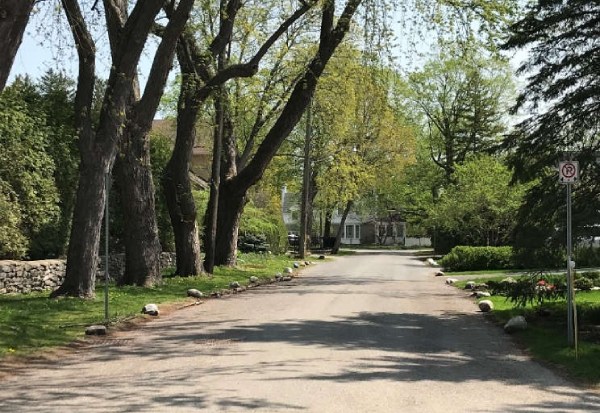Rockcliffe Park Historic District National Historic Site

© Library and Archives Canada / PA-051845
Rockcliffe Park Historic District was designated as a national historic site in 2023.
Historical importance: well-established and affluent residential neighborhood in Ottawa with a layout strongly influenced by the region’s topography and woodland areas.
Commemorative plaque: no plaque installedFootnote 1
Rockcliffe Park Historic District
The Rockcliffe Park Historic District is located on the traditional unceded territory of the Algonquin Anishinaabe people. Located northeast of downtown Ottawa, on the south shore of the Ottawa River, the district covers an estimated area of 1.77 km2. It was designed and laid out in 1864 by Thomas Coltrin Keefer, as part of Thomas MacKay’s large estate purchased in the 1830s. It is characterized by narrow curving roads, without curbs or sidewalks, large lots and gardens, and houses set within a lush green landscape. Together, these features make it an excellent example of the picturesque English and American suburban planning traditions of the late 19th century. The varied, high-quality architecture was the work of such renowned architects as Allan Keefer, Werner Noffke, A. J. Hazelgrove, Hart Massey and A. J. Ames. They promoted the use of a variety of styles such as Tudor, Georgian, and Queen Anne. Homes in this district were built with durable, high-quality natural materials, in a setting that respects the original rural ambience of the Village of Rockcliffe Park.

© Library and Archives Canada / William James Topley / PA-011342

© Canada Department of Interior / Library and Archives Canada / PA-043367
Rockcliffe Park is also an important Indigenous historical site. Artefacts found along the Ottawa River indicate that people from many Indigenous nations passed through this crossroads, which was part of a vast network of communication routes leading to many parts of North America. More specifically, the Rockcliffe area was known as the hunting ground of Chief Constant Pinesi (died 1834), Grand Chief of the Algonquin Anishinaabe people, and was located on an ancient portage route that provided a shortcut around Rideau Falls between the Rideau and Ottawa rivers.

© Library and Archives Canada / PA-034260

© Parks Canada / Christine Boucher
“It was 1864. Thomas McKay – a builder of the Rideau Canal - owned land by his home that he regarded as fit only for grazing cattle. His son-in-law had a very different vision. Thomas Keefer laid out a plan for a new type of residential community - for houses in a parklike setting, large lots, curving roads that followed the natural topography, no sidewalks, careful siting and proportioning of houses, subdued lighting, and abundant trees. One hundred and sixty years later, we are immensely proud that it has been accorded the rare recognition as a national historic district. Today, we celebrate that vision – and that of generation after generation of residents who have dedicated their time, effort, and love of community to protect and enhance this place of quiet natural beauty in the heart of our nation’s capital.”
Since 1864, the Village of Rockcliffe Park has been and remains a predominantly single-family residential community. It was planned as a purely residential area to house future civil servants moving to Ottawa, which became the capital of the new Dominion of Canada in 1867, and continues to provide an inviting environment for most of Ottawa’s diplomatic missions. Other land uses, such as high-density housing as well as commercial and industrial development, have always been excluded from this community. The only institutional buildings in the Village are three schools and a combined community centre and library. Of particular note is Hart Massey House. Built in 1959 on Lansdowne Road North, it is an iconic example of mid-20th-century modern residential architecture in Canada. Private residences of national significance such as Stornoway—the residence of the Leader of the Opposition—and a number of embassies can be found in the neighbourhood. McKay Lake, formerly known as Hemlock Lake, and an adjacent small pond (“the Pond”) formed from a quarry, are located in the eastern section of the Village. Rockcliffe Park is known for its parks and green spaces, including the Jubilee Gardens and the Village Green, and the Caldwell-Carver Conservation Area bordering the lake. Amalgamated with the new City of Ottawa in 2001, Rockcliffe Park retains a high degree of integrity and many of the key elements associated with its original design.
This press backgrounder was prepared at the time of the Ministerial announcement in 2024.
The National Program of Historical Commemoration relies on the participation of Canadians in the identification of places, events and persons of national historic significance. Any member of the public can nominate a topic for consideration by the Historic Sites and Monuments Board of Canada.
- Date modified :